The Media War: Robert Erskine Childers in West Cork
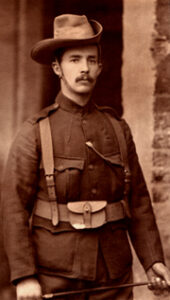
By Anthony Barrett
An important aspect of the Irish Civil War was the use of propaganda in the media by both sides to win over public support, the key to success in this conflict. While the Provisional Government’s army was resourced from Britain, their opponents relied heavily on the Irish public to keep their forces operational.
The dominant form of information media for the general public at this time was the newspaper, with titles produced nationally and locally proliferating and widely consumed. Even before the war broke out, most of the mainstream titles were editorially pro-Treaty. The anti-Treaty faction countered this by publishing newspapers of their own. The well-known writer and politician Robert Erskine Childers was centrally involved in these efforts.
When the war devolved into a guerrilla campaign, the difficulties faced by the anti-Treaty faction in maintaining their publications greatly increased, with Childers eventually being forced to publish from a remote West Cork mountainside. As the conflict became increasingly bitter and destructive, his uncompromising anti-Government writings led to a mainstream media backlash against him personally, with ultimately tragic consequences for one of the most high-profile advocates of Irish independence.
The Publicist
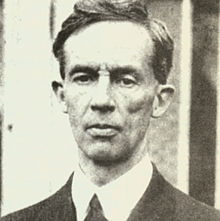
Robert Erskine Childers was an extremely talented writer and journalist. His only novel, The Riddle of the Sands, an espionage thriller published in 1903, became an acclaimed bestseller and has remained enduringly popular – it is still in print. During the War of Independence, he was appointed as acting Director of Publicity for Dáil Éireann and editor of its official gazette, the Irish Bulletin.
This underground publication helped to keep the British press, and consequently the British public, informed of the atrocities being committed by Crown Forces in Ireland, leading ultimately to pressure being put on the British Cabinet to engage in a truce by the summer of 1921.
During the Treaty negotiations that followed, he was in London serving as chief secretary to the Irish delegation, but he opposed the final proposals and strongly advocated the delegation not to sign.
Robert Erskine Childers was an extremely talented writer and journalist. One time Britsih soldier later Irish republican activist and publicist. By 1922 ardent anti-Treatyite.
In the era before the widespread adoption of public radio broadcasting, newspapers were the dominant form of information media for the general public, supplemented by the posting of press sheets and bills in public areas. Nationally circulated and highly influential newspapers such as the Irish Times, the Irish Independent and the Freeman’s Journal were supportive of the Treaty from when the terms of agreement were first made public, and editorially became disparaging of the growing opposition that developed in the Dáil during late December 1921 and early January 1922.
For the anti-Treaty Dáil TDs to win over public opinion and prevent the incorporation of the new Irish Free State as a dominion of the British Empire, they would have to counter the stance of the national press, so in January 1922 they founded their own newspaper, Poblacht na h-Eireann – The Republic of Ireland. [1]
By February Erskine Childers was appointed as its editor. He had once been an ardent advocate of Home Rule for Ireland, but the actions of British Crown forces during the War of Independence had so appalled him that he wanted an independent Ireland to have nothing more to do with Britain. He wrote extensively in Poblacht na h-Eireann detailing how the Irish Free State envisaged by the Treaty would be extremely bad for the future of Ireland.
The President of Dáil Éireann, Arthur Griffith, who had never trusted Childers due to his former career in British Intelligence during the Great War, countered his anti-Treaty propaganda by declaring publicly in the Dáil on the 27th of April that Childers, a Sinn Féin TD for Kildare-Wicklow, was a lifelong agent of the British Secret Service and quoted from an article in Poblacht na h-Eireann which he deduced was a call to assassinate the Irish signatories of the Treaty.
Childers was the subject of much personal abuse during the Treaty debates due to his English birth and anti-Treaty stance.
Griffith’s claims were baseless and politically motivated, but this stormy Dáil exchange was covered in the newspapers the following day and Childers could never afterwards escape the slur of being called a duplicitous Englishman meddling in Irish nationalism to its detriment.[2] In the general election that followed on the 20th of June, he only received a couple of hundred votes and lost his seat.
On the morning of the 28th of June, after the National Army of the Provisional Government began shelling the Four Courts to oust the anti-Treaty IRA that occupied it, Childers rushed to Wood Printing Works on Fleet Street to issue a special single-sheet stop press edition of Poblacht na h-Eireann, carrying a defiant message from Rory O’Connor in the Four Courts garrison.[3]
Leaving his invalided wife Molly and their two sons at his home in Bushy Park Road, he went on the run, overseeing further daily issues of the single page bulletin, now called Poblacht na h-Eireann War News, keeping the Dublin public informed of the war from the republican perspective. It published their proclamation of war on the Provisional Government on the 29th of June.[4] Wood Printing Works was raided by the National Army on the 3rd of July, but War News continued to be published from other locations in Dublin over the following months.
Éamon de Valera left Dublin for republican headquarters in Clonmel on the 12th of July, hoping to establish a government for the territory controlled by the republican army. He soon realised that republican Chief-of-Staff Liam Lynch had no intention of forming a government.
Fearing the impact that this would have on public opinion, de Valera oversaw the creation of a republican publicity department. Robert Brennan, Erskine Childers, Dorothy Macardle and Kathleen O’Connell were all brought south to Clonmel for this work. Brennan and Childers were sent on to Cork to take over the prominent regional newspaper The Cork Examiner. Here Childers joined an editorial department comprising of young anti-Treaty volunteers such as Frank O’Connor, Seán O’Faoláin and Dan Corkery, who would become prominent Irish writers in later years. The newspaper continued to be published largely as before, but its readership was informed that the new editors would apply censorship to ensure ‘impartial’ content.
The War Correspondent
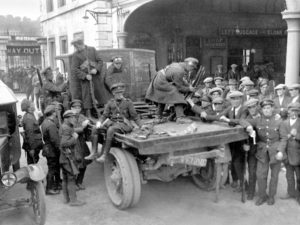
By now extensive fighting raged between the advancing National Army and the Munster republicans along a front extending from Limerick to Waterford. Childers got Frank O’Connor to bring him to the front so that he could report on the fighting himself. Soon he became a constant presence at the various republican headquarters in Fermoy, Buttevant and Kilmallock, and though he played no role in the military leadership, he was given the rank of Staff Captain.
During the July fighting in Dublin, he was frequently observed walking openly on streets where combat was taking place in the distinctive light mackintosh coat that he always wore. Once again in early August, when republican columns supported by improvised armoured cars launched an attack on the National Army troops occupying Bruree (the village where de Valera grew up), Childers was a visible presence on its streets, keenly observing and recording the fighting, and somehow always managing to avoid being hit in the crossfire.[5] His reports detailing the military successes of the republicans in Limerick were subsequently published in The Cork Examiner.
The Propagandist
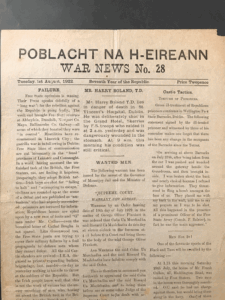 But the republican successes in the summer fighting were illusory, and by the 8th of August their defence of the Limerick-Waterford front finally collapsed after the National Army invaded Cork by sea.
But the republican successes in the summer fighting were illusory, and by the 8th of August their defence of the Limerick-Waterford front finally collapsed after the National Army invaded Cork by sea.
Over the following week, the republicans evacuated and burned the former British military barracks they had used as their headquarters and made plans to turn to a guerrilla campaign.
Publicity was not neglected, with GHQ Operational Order No. 7 calling for the destruction of all copies of hostile newspapers in their territory, specifically the familiar titles of the national press. The printing equipment at The Cork Examiner premises was damaged, putting the newspaper temporarily out of circulation. Robert Langford, a Cork First Brigade company captain and a printer by profession, was ordered to acquire printing equipment from various businesses in Cork city for the assembly of a mobile printing works at Ballincollig Barracks, intended to publish a new republican newspaper.[6]
Ballincollig Barracks was evacuated and burned on the 10th of August and the entire printing plant with a lorry load of paper was shipped out west to the schoolhouse near Ballymakeera, a village just two kilometres from Ballyvourney, where it was re-assembled and brought into operation as Publicity for the First Southern Division.
The first issue of the new paper, named Poblacht na h-Eireann Southern Edition and dated Friday 11th August, was a single stop press sheet mimeographed by other printers, possibly at Macroom. Its War Bulletin proudly declared that the National Army advance on Cork was being held back by the republicans, though by its date of issue they had already lost the city and had fled to West Cork.
Childers was at Fermoy headquarters when Cork was invaded and when he returned to the city the chaotic evacuation to Macroom was underway. Frank O’Connor, who was forced to walk part of the way to Macroom for want of transport, was passed on the road by a car overladen with republicans. Childers was standing on its running board clinging bravely to its side, though he still managed a cheery wave as they sped past.
Among the republicans who arrived in Macroom on all manner of transport was a squad of about thirty volunteers riding commandeered hunting horses. Commanded by David L. Robinson, these were the Republican Army’s short-lived cavalry corps, raised and trained at Ballincollig Barracks during the early phase of the war.
After the outbreak of Civil War Childers was put in charge of the anti-Treaty republican publicity department.
Like Childers, Robinson also had Anglo-Irish background and was a former British Army officer who had converted to the republican cause. Both were good friends of long standing, and Robinson became Childers’ loyal sidekick for the rest of their time in West Cork. He soon abandoned the republican cavalry and moved on to trying to impart military professionalism on the unruly and disillusioned republican guerrillas in the district.
Robinson’s horsemen also brought with them a full military field kitchen which they assembled on the lawn of Macroom Castle to feed the throngs of republican fighters assembling there. Childers was somewhat feted among them as a revolutionary celebrity, but he was also cautioned by Cumann na mBan agents from Dublin that his life was in danger from underhand elements of the National Army. He merely dismissed these warnings with a weary resignation.
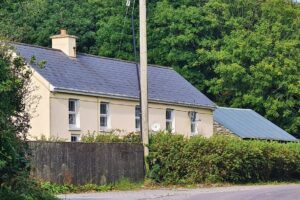
On the 12th of August he was brought out to Ballymakeera to meet Robert Langford at the printing works and to join the editorial staff, which included Frank O’Connor and Sean Hendricks. They were billeted in an Irish-speaking farmhouse at Fuhirees, Coolea, about ten kilometres south-west of the schoolhouse, an unfamiliar experience for Childers.
Everyone who met him at this time remarked on how gaunt and ill he looked. To most he came across as reserved and dour, overly pre-occupied with his publicity work. He never stayed long in anyone billet, to the extent that the safehouses in the district each considered him a permanent occupant, so frequently was he with them.
He was a polite and very undemanding guest, who would rather sleep on a settle by the fire than deprive a child in the household of their bed. He gave generously to anyone in need, even if it meant depriving himself.
Everyone who billeted with him learned that he carried always a tiny .32 Spanish ‘Destroyer’ pistol, usually pinned to his braces. He revealed that it had been presented to him by Michael Collins,[7] once a close family friend who used to stay frequently in his home at Bushy Park Road. He seemed to treasure this little weapon as a memento of another time.
On Monday the 14th of August, the first edition of Poblacht na h-Eireann Southern Edition printed on the new mobile works, Issue No. 3, rolled off the presses at Ballymakeera schoolhouse. Comprising two pages printed on a single sheet, one of its lead articles was an obituary for Arthur Griffith, who had died from a stroke over the weekend.
Though latterly Childers and Griffith had been enemies, the magnanimous obituary praised his great contribution to Irish nationalism and noted his aversion to political violence. It attributed his signing of the Treaty to the threat by the British of immediate and terrible war, which caused him to capitulate and agree to their terms rather than inflict further violence on Ireland.[8]
Subsequent issues of the paper were published every Monday, Wednesday and Friday. Years later Langford claimed print runs of up to 10,000 per issue, but the reality was likely 1000. This paper could not be described as impartial, with every issue highlighting further transgressions by the National Army in the war and increasingly styling them as a colonial invasion force.
Distribution from the remote printing works was always difficult and carried out in a haphazard fashion. A car had been assigned to publicity, but it was intercepted by other volunteers and Childers never saw it. He pleaded in vain to First Southern Division headquarters for a replacement. Nora O’Sullivan, the sister of the Ballyvourney Battalion commander Pat O’Sullivan, volunteered to cycle from Ballymakeera into Cork every week with issues hidden in her belongings, returning with new copy for publication in subsequent issues.[9]
Newsagents in the city refused to stock it, so Cumann na mBan volunteers organized by Mary McSwiney sold it from kerbsides. Free advertising was achieved by volunteers painting the name of the paper as graffiti on prominent locations and billboards. Remarkably, the accounts for First Southern Division Publicity up to Issue No. 15 still survive. Priced at 2d per issue, the cumulative return up to that point was £12 4s, tentatively indicating that a total of 1464 had been sold, giving an average of 98 sales per issue.[10]
The Return of an Old Friend

Around Wednesday the 16th of August, Childers received word that another very prominent nationalist figure had arrived in the district, and he made off over the hills with his typewriters and handpress to Gougane Barra near Ballingeary, the secluded lake nestled in the Shehy Mountains that is the source of the River Lee. Here at the hotel by the lakeside he met up again with Éamon de Valera and offered his immediate services as a secretary.
After the evacuation of the republican headquarters at Fermoy Barracks, de Valera had called openly for the republicans to stop fighting, but Liam Lynch was totally opposed to this. The former president of Dáil Eireann was shuttled away to this isolated location in the heart of republican controlled territory, where he apparently hoped to meet with First Southern Division officers.
Side-lined and powerless, he had nothing for Childers to do. De Valera and his adjutant, James O’Flynn, spent an idle and frustrated week at Gougane Barra, taking in the scenery around the picturesque lake and firing practice shots against the rocks with de Valera’s Mauser C96 pistol. After a few days they and Childers were moved to the local company headquarters at O’Leary’s of Gortafludig nearby, and finally on Monday, 21st of August, Cork First Brigade officer Sean O’Tuama sent de Valera to the headquarters of the First Southern Division commander Liam Deasy at a farmhouse in the hills north of Enniskeane[11] while Childers returned to his newspaper.
De Valera met Deasy that afternoon and made the case to him that the war was unwinnable and should be called off. After a lengthy debate, Deasy offered to provide a car to bring de Valera back to Ballyvourney. He would be collected the following morning at Bealnablath Cross, near Crookstown, where the First Southern Division officers were staying.
The Loss of an Old Friend
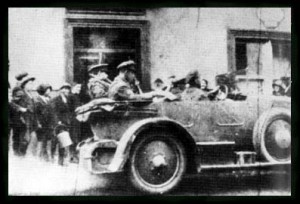
The following Wednesday, 23rd of August, the editors in Ballymakeera schoolhouse received for publication the report on an ambush that the First Southern Division officers had conducted the previous day on a National Army convoy travelling through Bealnablath from Bandon.
It was most likely received from the divisional adjutant who had his headquarters in their district, as the details match closely his report sent to Liam Lynch, which still survives.[12] The report was duly published in that day’s issue, No. 7, with the claims that there were three fatal casualties on the National Army side and that there were unconfirmed reports that Michael Collins was travelling with the convoy.
Later that evening some volunteers came to the schoolhouse with a copy of the Evening Echo, which headlined with the sensational news that Michael Collins had been killed at the Bealnablath ambush. The editors celebrated, except for Childers who sat quietly at his desk writing an obituary for his former friend. This was published in the Friday issue, No. 8. Collins’ energy and abilities were highlighted, but his mistake in signing the Treaty was attributed to him being outsmarted by the British, and the Civil War was blamed on him following Churchill’s orders.[13] To the end, Childers could not reconcile with Collins’ reasoning.
Childers regretted the deaths of Arthur Griffith and Michael Collins though they had become his political enemies.
By the end of August, the National Army had advanced to occupy the towns of Macroom, Bandon, Dunmanway, Bantry and Kenmare, leaving the hilly countryside in between still under republican control. The threat of National Army raids from Kenmare or Macroom forced the printing staff to move their plant to a little cottage on the side of the road near the village of Renanaree, high on the hills between Ballyvourney and Ballingeary. The move was carried out so effectively that publication was not interrupted, and on the 1st of September Issue No. 11 was the first to be printed at the new location.
The greater isolation of the editors exacerbated the problem of finding new material to print. Childers tried to show up at the attacks being carried out by the republicans on the occupied towns, but this was mostly discouraged.
On one occasion, he insisted on travelling to an attack with Kilnamartyra volunteer Mick Sullivan, and even made arrangements in the event of his death with the other editors. Mick brought him instead to his family home, where Childers was left for the night while Mick went off to fight.
Though outwardly he maintained enthusiasm for the publicity work, the isolation, the difficulties, and the futility of it all depressed him, as he revealed in letters to his wife Molly. The separation from her and his two sons was also very trying, but he managed to maintain some contact with Dublin. Nora O’Sullivan would on occasion bring his despatches to Dublin herself, travelling from Cork to Dublin by ship.
The Fugitive
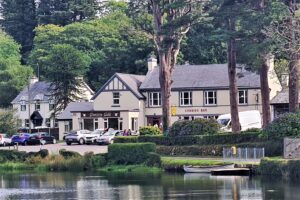
In early September another anti-Treaty newspaper, Poblacht na h-Eireann Scottish Edition, began to be printed in Glasgow and distributed in Ireland. It was a larger paper with up to eight pages, re-printing articles from War News, Southern Edition, and even carrying some ads. This could more effectively compete with the pro-Treaty national press.
The national press responded with some damaging propaganda of its own. Because the leadership of the Republican Army were shadowy figures, largely unknown to the public, de Valera and Childers, already established hate figures to the pro-Treaty side before the war, were identified in the national press as being behind the republican military campaign. Childers was said to have led republican attacks in Limerick, then commanded the demolition team that destroyed Mallow Viaduct (disrupting the rail link between Cork to Dublin and causing severe economic damage).
Childers was vilified pro-Treaty as being single-handedly behind the anti-Treaty guerrilla campaign.
He was said to have commanded the launch that attacked the cable station at Valentia Island in Kerry (a major communication link between Europe and America), and to have been behind every major town attack and ambush in the West Cork guerrilla campaign, which claimed National Army lives on an ongoing basis. The attacks that he supposedly led were clearly chosen to anger the general public.
Childers was so annoyed by these false claims that he wrote a letter to the Irish Independent denying them all, which it published on the 18th of September.[14] But a lie told with authority to a receptive audience is far more powerful than the truth. By now he was utterly despised by the rank and file of the National Army and much of the public as the untrustworthy Englishman behind the ruinous Civil War.
In early September a republican agent working in the National Army’s Cork Command uncovered plans for a major military sweep through Ballingeary and Ballyvourney. When Liam Lynch was informed, he ordered his men to leave the area and the printing plant to be moved. Following the printing of Issue No. 14, dated 8th of September, the plant was dismantled by Robert Langford and his team and moved into storage at the headquarters of the First Southern Division adjutant in Clogher, a mountainous district about fourteen kilometres north of Dunmanway.[15]
Childers relocated to Walsh’s of Tuirín Dubh near Ballingeary to await the great sweep that never materialized. Here he spent his days digging potatoes and reading, but his bad health, the isolation and lack of work affected him greatly. His life’s journey had certainly taken quite an unusual trajectory, from once being a celebrated member of the British Establishment, to now being a fugitive IRA guerrilla hiding out on a remote West Cork mountainside.
Eventually he went to headquarters at Clogher requesting a move from Publicity to another role, but the divisional officers refused, claiming that his presence alone would draw increased National Army raids to the district. While he was there, scouts arrived with a warning that National Army forces were massing in Dunmanway for the long-awaited sweep. Langford’s men hurriedly loaded the printing equipment onto a lorry and drove off with Childers towards another hiding place, but along the way the lorry got stuck in a boggy road.
As they struggled to free it, a National Army lorry carrying troops and towing an 18-pounder artillery gun approached. A fierce gun battle ensued before the National Army patrol withdrew back to Dunmanway with two casualties. The printing equipment was hidden in the open air at nearby Coolmountain and the printing staff fled to the mountains around Ballingeary.
After the great National Army sweep, led by the former Bandon Battalion IRA commandant General Sean Hales, had passed through the area, on the 8th of October Childers went with Coolea company captain Jamie Moynihan to Cork Fifth Brigade headquarters at Kealkil near Bantry, to request them to bring the printing plant into their area. The aggressive Fifth Brigade columns had effectively confined the National Army garrison within Bantry and the Kealkil district was considered relatively safe from raids.
The Fifth Brigade engineers were delayed initially by having to dismantle a large armoured lorry, a relic of the summer fighting in Limerick that had somehow ended up in the West Cork hills, but eventually on the night of the 15th of October they brought the printing equipment to a secure location at Cousane near Kealkil. To his dismay, Childers found that the plant was now inoperable, with crucial parts, some of the type and most of the paper having been damaged or stolen during the weeks of moving and hiding.[16]
This was not the end of Poblacht na h-Eireann Southern Edition though. Childers and the editorial staff continued to produce issues which were smuggled into Cork and printed secretly at Robert Langford’s own printing business. It returned to the streets with Issue No. 15, dated the 4th of October (a different typeface for its title is apparent) and would continue to be issued at first twice weekly, then weekly, up to the following January.
The paper now began to publicize the growing number of killings of republican prisoners at the hands of their captors, which had become increasingly prevalent after the death of Michael Collins. It continued to be produced in Ballingeary and printed in Cork up to Issue No. 35, dated 23rd January 1923. Soon after this date Langford’s business in Cork was raided and his printing equipment was seized, ending publication of the guerrilla newspaper for good.
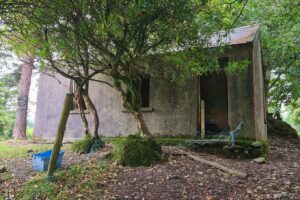
The proliferation around the country of national newspapers with high journalistic standards kept the general public closely informed of the latest national and international events.
Many a night was spent by neighbours before a hearth discussing and debating the latest political developments in these dramatic times. One evening in late September John Quill, an elderly farmer in Kilgarvan, found a very famous public figure amongst the volunteers billeting in his house for the night. To lift his depressed mood, David Robinson had brought Childers on a tour of republican territory in South Kerry.
Highly articulate and keenly interested in politics, Quill chanced to engage Childers in a chat about the Treaty. To the great interest of the volunteers looking on, the normally reticent Childers joined in a lengthy discussion with Quill on all aspects of the Treaty negotiations and the merits of de Valera’s alternative Document No. 2. These two old men, the well-informed Kerry farmer and the key player in Irish national politics, stayed discussing the state of the country in the remote farmhouse kitchen well into the early hours of the following morning, long after their fire had gone out.[17]
The Prisoner
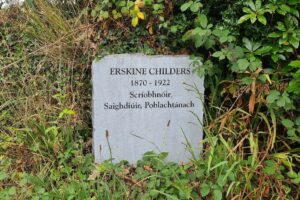 At a meeting in Tipperary on the 17th of October, the Executive directing the Republican Army called on de Valera to form a shadow government with the anti-Treaty TDs elected in June, to which they would pledge allegiance.
At a meeting in Tipperary on the 17th of October, the Executive directing the Republican Army called on de Valera to form a shadow government with the anti-Treaty TDs elected in June, to which they would pledge allegiance.
After Lynch had approved his choice of cabinet by the 25th of October, de Valera sent a despatch to Childers calling him back to work as government secretary. Childers eagerly agreed to return to Dublin and political work.
He diligently stayed working at Publicity to the very end, with Issue No. 19 probably being the last that he contributed to, then around the 30th of October he and David Robinson embarked on a hazardous journey on bicycles and on foot from West Cork north through the dangerous, war-torn countryside to Glendalough House in Annamore, Wicklow, where Childers had lived since the age of thirteen. Here they stayed undercover while Childers prepared for the final leg of the journey to Dublin.
Childers was arrested by pro-Treaty troops on November 10 1922 in Wicklow and executed in Dublin on November 29.
But observant neighbours noticed their presence and the authorities were alerted. Early on the morning of the 10th of November, National Army troops surrounded the east wing of the house and burst in. Childers was seized as he emerged from his bedroom carrying the little pistol. The National Army immediately issued a press release on the high-profile capture of Childers and Robinson, styled as the leaders of the irregulars in North Wexford, which carefully pointed out that Childers was captured under arms.[18]
Childers was subsequently tried by a military court for the fictional crimes that the media had accused him of, though the only charge that could be brought against him was possession of the little pistol during his arrest. Even this was enough to condemn him to death, in the harshest interpretation possible of the new laws of the Public Safety Act.
During his trial, he saw Molly once again and later at his cell in Beggars Bush Barracks in Dublin, he was allowed to briefly meet his elder son for the last time.
Early on the morning of the 24th while the sun was still low in the sky, he was brought into a large shed at the barracks used as a firing range, where a section of National Army troops had already assembled near a coffin. Here they ended the life of the thin, frail republican staff captain, old beyond his years, who had totally committed himself to his understanding of an Irish Republic. The Irish Free State had killed one of the earliest and most prominent members of the movement that had given rise to its own creation, just as many others had fallen victim to former comrades through the uncompromising logic of civil war.
Robert Erskine Childers never got to write perhaps the greatest story he could tell, that of his own life. In his final speech from the dock after he was sentenced to death, he summarised his career and motives, and his long conversion from unionism to republicanism.
This was recorded and fittingly published in one of his own newspapers, Poblacht Na h-Eireann War News, on the 29th of November 1922, and was subsequently carried by the national press. To the end he was convinced that he was bound by honour and conscience to oppose the Treaty in peace and war, and that the journey he took was the right one. But his final words were a plea that the Irish Nation would ultimately be reconciled after the violence and bitterness of the Civil War had abated: “May God hasten the day of reunion among us all under the honoured flag of the Republic.”
If you enjoy the Irish Story and wish to support our work, please considering contributing at our Patreon page here.
References
[1] This and related anti-Treaty publications would all share an idiosyncrasy in their title also seen on the 1916 Proclamation – the omission of the síneadh fada over the capital E.
[2] Freeman’s Journal 28-Apr-1922 P5 ‘Dramatic Revelations’
[3] REC Papers TCD MSS 7817 Diaries 28-Jun to 03-Nov 1922
[4] Poblacht Na h-Eireann War News No. 2 29-Jun-1922 ‘Proclamation’
[5] O’Malley Interviews, Maurice Donegan
[6] Military Archives MSP 34REF31293 Robert Langford
[7] UCDA P150/1195 de Valera to McGarrity 28-Nov-1922
[8] Poblacht Na h-Eireann Southern Edition No. 3 14-Aug-1922 ‘Reported Death of Mr. Griffith’
[9] Military Archives MSP 34REF35989 Nora Douglas
[10] Military Archives DOD A 15296-E4 Intelligence File Childers, Erskine
[11] Military Archives CW/CAPT/Lot 3 ‘Coppeen Captures’ S O’T to O/C 1SD 22-Aug-1922
[12] UCDA P69/93 Adj 1SD Adj to GHQ C/S 24-Aug-1922
[13] Poblacht Na h-Eireann Southern Edition No. 8 25-Aug-1922 ‘Michael Collins’
[14] Irish Independent 18-Sep-1922 P6 ‘Mr Erskine Childers’
[15] Military Archives MSP 34REF45215 Nora O’Leary
[16] Military Archives CW/CAPT/Lot 3 ‘Coppeen Captures’ EC to O/C 1SD 17-Oct-1922
[17] O’Malley Interviews, JJ Rice
[18] Irish Independent 11-Nov-1922 ‘Arrested in Co. Wicklow’